Explore the 5 key phases that significantly affect your SharePoint intranet adoption rate. Follow the step-by-step guide and be on the way to successful intranet adoption.
SharePoint Metadata: Key Strategies for File Share Migration
Summary: Moving away from File share to SharePoint is one of the most painful exercises most organizations describe. With the structured approach, you can simplify this process to just a few workshops and end up with a rock-solid, and easy-to-find structure. Avoid using existing folder names as your new SharePoint structure and simplify existing containers first before defining metadata.
Although we’re builders of intranet-in-a-box, we often consult on the SharePoint migration projects (see our SharePoint migration plan). One of the most common challenges in any organization using file share, is migrating this old structure to SharePoint. Even with a wealth of tools available in SharePoint around content findability, such as metadata and tags, you still need input from your teams.
So, how do we go about it in just a few simple workshops?
Pre-Work
First, you’ll need to bring the right people to the table.
Here are few guiding principles:
Understand which teams own content in your existing file share
The ideal group size is 4-6 stakeholders
Ensure people in the room are content owners, and members who can assign tasks and allocate resources for their team. This doesn’t have to be the same person, hence we recommend 4-6 people per team.
Ensure everyone in the room is likely to contribute to their area and not just listen in.
Content Audit
You have picked the right people, now onto the content audit.
First, why do we need a content audit? Don’t we already know what content is in our file share?
Our experience shows the following:
Not everyone on the team knows everything about their existing file share structure
Much of the structure is obsolete, ad-hoc, with lots of catch-all folders
Every workshop we ran, had people discover something new about the content based on their peer’s input
Running the workshop (in person)
Request for participants to individually write down types of content their own and work with.
Give examples, such as project status report, project plan, risks and issues etc. This will help ideas flowing
Ensure participants work individually.
Request each participant to share their individual types of content and let others ask questions
Keep other participants’ interaction only for clarifications, not brainstorming, countering, or questioning workflow or business flow. There will be a separate activity to cover that :)
Remote participation
More often than not we work with hybrid teams where some participants are at the office and others are remote. There are facilitation techniques we use to accommodate this, which is a whole different topic, and with the right mix of technology and facilitation participants as productive as in on-site meetings. The key to the remote session is preparation and make sure everyone can contribute without feeling left out.
The Result
As a result, you will end up with a sample structure like below. And by the way, with all the pre-work to get to this point will only take about 45 min with an experienced facilitator.
Defining New Content Structure
Now that we have all the content on the table and everyone has the context of what everything is, it’s time to shape this into a tree.
The task is to: group relevant content into logical groups or clusters and assign labels to each cluster. For example: [Contract Template], [Agreement Template], and [SOW Template] can be collectively put into category called [Templates].
Towards the end of this exercise you will end up with something like this, notice how various content types cluster around themes forming what we call SharePoint Content Type:
At this point, we spent only about an hour and 1/2 and already have a good idea how the new repository will look like. Next, we finalize the structure.
Selecting Metadata and Tags
With the metadata you can group content by any number of tags, virtually creating “folders” on the fly. With the folder, you get to navigate the structure in a fixed format.
Regardless of method, you chose to structure your content, folder or metadata, using the output from the previous exercise, it’s easy to build the final structure.
Here are some guiding principles when tagging your content:
Use the auto-tagging feature in SharePoint to tag content automatically when it’s dropped into a specific library or folder (if you chose to go with folders).
Avoid creating hierarchies deeper than 3 levels. For example: [Project Alpha] -> [Deliverables] -> [Fact Sheet] is a good example of 3 level hierarchy.
Avoid manual versioning and creating folders to manage those. For example, avoid: Contract_v3_final, instead, rely on built-in versioning features to version your content.
This may sound like nothing to do with the metadata but we often see people create folders for Draft/Final documents which affect the content structure
Don’t confuse Metadata with a Document Type. This might sound obvious but people make this mistake all the time. Consider this scenario:
Should [Balance Sheet] be a content type or the [Year]?
The correct way is [Balance Sheet] as a Content-Type since and [Year] is a Metadata field.
NOTE: Content Types reflect entities around which rules are formed (archival, retention etc). Metadata, in this case [Year], is merely a descriptor/property of the entity.
As obvious as it is, many fileshare structures out there have the exact opposite in how folders are structured.
Conclusion
When we follow this collaborative approach with the client we see huge increase in adoption and decrease in support. The tempting alternative of bringing structure from fileshare will bring old problems to the new environment. We have used this approach on number of projects over the years and refined it meticulously for the best results, so if you have questions about details - drop us a note!
What are some of the challenges you found when migrating from fileshare to SharePoint? Leave your comment below.
Yaroslav Pentsarskyy is the Director of Product at Origami. He's also 8 time Microsoft MVP, speaker at many local and worldwide tech events, and a published author of several SharePoint related books.
Intranet Launch Check List and Activities
Can you measure the ROI of your intranet design efforts?
SharePoint Intranet Essentials and Must-haves for a Modern Intranet
7 Steps to Effectively Introduce an Employee Intranet & Digital Workplace
Remote Work Essentials: What Organizations are Missing Today
Last week we had a chance to attend Remote Work Summit to really understand the disruptive forces that remote workers are bringing to industries. Many employers are unaware of significant shift in how their teams are evolving and what it takes to keep their productivity high.
After listening to dozens of executives and managers successfully running remote teams, few patterns started to emerge which boil down to:
Managing Communication
Managing Knowledge
In this post you'll find the insight I got from managers and executives of successful remote-first companies.
Companies operate in remote-like mode without realizing it
Many large organizations these days are distributed geographically, does that mean they are remote enabled organizations? What about companies which have offices in the same city but employees of one office never meet someone from another office, have a separate lunchroom, separate boardrooms. In relation to each other these teams operate in a remote mode.
How about companies with employees on different floors rarely visiting one another. I've seen entire office events organized for members of a particular floor purely based on the job role of people on that floor. Entire teams operate in semi-remote or mixed-mode without even realizing it.
The issue with operating in remote-mode without actually realizing it is that there is lack of processes and tools which positively enable such teams to function. This results in frustrations, loss of productivity, and ultimately turnover.
So what's required to successfully make this mixed-remote environment happen?
Managing communication is all about expectations
The biggest fear of any company looking at introducing remote is that team members will not be able to get a hold of each other in time, miss deadlines and start blaming technology as an excuse.
Another fear, this time from employees, is that they will be getting messages and requests from their managers and colleagues all times of the day resulting in work creeping into their personal lives.
All this will happen without proper expectations in place.
Successful remote-first companies such as Doist, Trello, GitHub and others, set communication expectations and build culture to solidify these expectations.
It's also about the tools that let you manage your communication and not bombard you with everything as high priority request. Email is an example of such (bad) communication tool where every request that comes in has to be reviewed and prioritized by you before you determine if it's important or not.
Tools such as:
Slack
Microsoft Teams
Twist
... help solve fundamental problem of everything-is-important but it's up to you to set up the culture to get on board with that.
"[Tools] don't solve the problem, you do" - is my interpretation of city's recycling slogan from below.
But it's far more than tools and expectations, it's also about planning
Managing communications is about planning
Planning is an important part of successful communication since much of communication these days is non linear. If someone is cramming for Monday morning presentation and needs your input at 9PM on Sunday knowing you're off at this time, that's poor planning on their part. It will result in stress for both of you.
Better approach is to set and manage your deadlines and communicate them with the dependent party. This way both of you know what to expect when well ahead of time.
Tools like:
Trello
Microsoft Planner
Aha
Todoist
... are all great starting points for planning your communication and work.
Managing Knowledge is the key
Managing knowledge is the key theme in Remote Work since most of the time you can't tap someone on their shoulder and ask question.
According to Nielsen Norman research on productivity, average organization of about 10,000 people looses $8 - $13.5 million each year from employee time lost while searching for information.
When users can't find: a template, a chart, a PowerPoint deck to reuse they end up re-creating the work which can take hours or days.
This isn't a new problem, in fact it's a great practice to manage your organizational knowledge whether you have remote employees or not. With remote workforce in particular, the importance of knowledge management becomes more relevant yet.
The issue of knowledge management is my favorite problem to solve because we're in the intranet business. Just as in my previous points, there are a lot of arguments about what tool to use and which one is best. The reality is that, again, knowledge management starts with the culture of your organization. You need to understand what kind of knowledge you're storing and what is the best tool to use for that.
In our organization we use videos a lot to manage interaction requirements of the software. Among other methods we tried, videos are the best method for our culture and how our team works. We found a balance in this method and no, not every requirement is a video.
For some other organization, written requirements are best. Other organization will use requirements database or a Planner or Trello.
The key is to determine the type of information you're storing and then select a tool. If you try and retrofit tools to host your information you will end up with a lot of customization or people will just not use the tool due to it's complexity.
These aren't the only challenges in building remote workforce but these are certainly fundamentals on which things are built.
Yaroslav Pentsarskyy is the Director of Product at Origami. He's also 8 time Microsoft MVP, speaker at many local and worldwide tech events, and a published author of several SharePoint related books.
SharePoint Conference 2018 (SPC18) - What You Need to Know
Last week one of the most important events in SharePoint community took place - the revived and long awaited SharePoint Conference in Las Vegas.
As with any major event, there is a lot of buzz from Microsoft and community. In this post, I'll focus on key items which help understand where the product is going in next 2 years. I'll back this up with Microsoft public sources and some analysis.
Key Themes
Product is evolving - Faster than you think
When Jeff Teper gave a demo of new SharePoint spaces he mentioned something that stuck with me: it took ~18 months from writing the idea on a paper to having it demo on the stage. Now think about it, that's incredibly fast to integrate SharePoint, and VR equipment, and create authoring experience all ready to be demo'ed in such a quick timeline. What this means is that important features you see these days requested on user voice will make their way into the product in a very short time. This creates much more attractive environment for Office 365 and many customers are seeing these advantages. It also creates fast paced environment for 3rd party ISV's like Origami to innovate but not over-engineer.
Modern UI is getting more modern
Microsoft continues to invest in modern UI, picture is worth a thousand words so take a look at some of these highlights (open in new window for larger picture):
Planner Integration into modern lists
New list creation experience
More here on how to Enrich your SharePoint Content with Intelligence and Automation in a post by Chris McNulty
SharePoint 2019 On-Prem is still relevant, but customers are transitioning
During the keynote, Jeff mentioned that Microsoft is still committed to on-prem and some of the major features such as modern sites are coming to SharePoint 2019. After my sessions I spoke with a customer to whom SharePoint on-prem is the only option due to regulatory requirements. However, many more customers are now looking to transition and it's becoming lesser of an obstacle for them. Microsoft's new strategy to win users over with better and new features in Office 365 is paying off and customers are considering this less pushy environment also.
PowerBi - everywhere, effortless
PowerBI has always been interesting but unless you've set it up before it was a pain to set up to even give a demo to a customer. Few new features are coming which include PowerBI integrated and woven directly into the UI fabric.
My favorite : Lists will soon have intelligent graphs with data discovered from your list, how cool is that, no code required it's just there.
This is great for ISV's and developers since you get this new feature without having to code anything as long as your data is stored in the list, your customer will get this feature automatically.
Teams
Microsoft continues to heavily invest in Teams. It's interesting, that, from my experience, only large organizations are truly jumping on using Teams but it's still major area of focus. Few key features are coming to Teams that look interesting:
Ability to Add Planner (Schedule and Chart Views) into Teams
Coming soon ability to add custom WebParts into Teams as tabs
Full Document library feature integration
Extensibility, Workflows and Integration
As ISV, we constantly look at integration and extensibility features that platform like Office365 has. These are freebies that we don't have to spend time on. Few major announcements that make SharePoint Online more attractive in terms of extensibility include (more highlights here):
Extending search with custom sources
Run custom scripts when site is created or associated to a hub site (Powered by Flow)
Coming up: row formatter to extend how your lists look like (more here)
SharePoint FX has new capabilities to extend modern pages, lists and even sites
Should I come to SPC next year?
As a speaker you might say, I'm biased. As an advisor, my recommendation is the following.
If you're a Microsoft shop - keep a close touch and attend SPC. It's not about whether the technical or upcoming release information is available online. It's about being able to ask speakers, vendors, insiders questions that can influence your strategy. Much of the content you see posted (after the session) online get filtered. By attending live event you get bits you wouldn't know otherwise.
So, yes, do come to SPC19 in Vegas next year!
Hope this helps in your upcoming intranet design strategies. Post your comments below, would love to hear!
Yaroslav Pentsarskyy is the Director of Product at Origami. He's also 8 time Microsoft MVP, speaker at many local and worldwide tech events, and a published author of several SharePoint related books.
SharePoint Online Hub Sites - What You Need to Know
[How-To]: Auto generate documents from data stored in SharePoint list and send them for signatures with DocuSign
If you're like most of us, you probably deal with a lot of document signatures. SharePoint is a great place to store those. What you don't want is to become a hub of all this communication between participants who participate in signing.
In this video, we literally take just few minutes to see how you can automate generation of e-signature enabled document based on the data stored in SharePoint list. You can then circulate the document between required parties without being involved in the logistics of the process.
The second part is being able to pick up the signed document and put it back as a list attachment, let me know if you're interested in seeing that and I'll be sure to post the solution.
Leave your comments on what are some of the things you're curious about so we can feature the most popular topics
Yaroslav Pentsarskyy is the Director of Product at Origami. He's also 8 time Microsoft MVP, speaker at many local and worldwide tech events, and a published author of several SharePoint related books.
How to [convince your boss] to send you to SPC18 this year?
SPC18 is around the corner and few people asked me to help them with convincing their boss in sending them to the event.
You need to be crisp and clear about immediate benefits of sending someone to an event. Here is the email you can use as a starting point to convince your boss.
Hi [insert your managers's name],
I wanted to bring up an opportunity for me to attend SharePoint Conference this year in May 21-23, in Las Vegas. SharePoint Conference is the largest focused event of it's kind in North America with over 100+ sessions from Microsoft, vendors, customers and worldwide experts.
With some of the big-name speakers like Jeff Teper, Microsoft Corporate VP, Mark Kashman Microsoft Senior Product Manager, and Bill Baer there will be many key announcements and strategic sessions at the event. Also, some of the most well known experts and MVPs, such as Andrew Connell, Ben Curry, Dux Raymond Sy, Spencer Harbar, Todd Klindt, Susan Hanley, to name few, will be delivering sessions on Office 365, Teams, Azure, PowerBI and more. Here is the link to all the tracks and session.
It would be a 3 day learning opportunity with 150+ hours of training, and over 2500 attendees to network with.
I believe this year's SPC will bring huge value to help me in particular on the following projects:
1. [Project Name]
2. [Project Name]
3. [Project Name]
In addition, after the event I can share materials and the knowledge with my team as series of lunch and learns so that everyone can benefit and increase the return on the investment.
I've estimated the cost breakdown below with Early Bird and referral discount included:
-Flight: $
-Hotel: $
-Transportation: $
-Meals (breakfast and lunch included): $
-Registration: $
--
TOTAL: $
I'd love to talk more to see what you think.
Thanks so much!
[Your Name]
Be sure to drop by your manager's desk next day to follow up on the email and let them know about Early Bird pricing they can take advantage of by registering you early.
Hope this helps, see you there!
Yaroslav Pentsarskyy is the Director of Product at Origami. He's also 8 time Microsoft MVP, speaker at many local and worldwide tech events, and a published author of several SharePoint related books.
Building a Better Business Case for Employee Engagement and Communication
SharePoint Migration Plan: Key Strategies and Lessons Learned
Since Microsoft’s announcement of SharePoint 2019, many organizations are moving to SharePoint 2016, SharePoint Online, or Hybrid. Here are the most common approaches and strategies we’ve used to help our clients migrate to a new SharePoint environment.
Lift-and-Shift
Often companies choose a lift-and-shift approach, where the solution is moved to a newer version of SharePoint with no functional changes. This approach is cost-effective especially if your previous solution has not been heavily customized, and you just want to take advantage of all the new features available. Lift-and-shift can also be selected as a “phase one” migration, followed by functional enhancements in later phases.
Although this is a relatively straightforward path, here are the key tactics we found crucial with many customers over the years.
Do a trial run / Have a Pre-Production environment
As your SharePoint environment goes through updates, it’s hard to keep track of everything. Small customizations are often implemented by Power Users directly on the page via script. Sometimes it’s a piece of JavaScript, or a workflow built using SharePoint Designer. Those may not easily translate to a newer version of SharePoint and that’s why we recommend doing a trial run on a development environment using DB attach process.
Once you have run the migration, you can involve your key users with a smoke test of their specific areas. This brings us to the next point of having a RACI matrix to know who does what.
Have a RACI
It’s an all-familiar [Responsible/Accountable/Consulted and Informed] matrix. and is an important part of the SharePoint Migration Plan. Here is why we need it:
To identify who will be doing the smoke test of trial migration and catching any issues on key pages (landing, key areas, and department pages etc
Know who to contact when things need to be fixed or content retired
Understand who makes go/ no-go decision, and understands all aspects of the solution
Identify stakeholders to prioritize issues before migration to production
Know who will send communication to which users at various stages of the migration
Know who will support users who are unfamiliar with some new UI present on their pages
Identify staff and contractors supporting outages after hours or on a day 1 after the migration
Identify who will track task completion, or who's your project manager
Prioritize Issues
To some people, an issue may not be an issue, and sometimes that’s a big issue :)
With the help of RACI you can determine key stakeholders who can help you drive what’s to be addressed right away or after Go-Live. If there are items on which your team can’t agree, use your Go /No-Go meeting to decide with [Accountable] stakeholders.
Keep track of the decisions for each issue discovered and what resolution should be. It will help you see what was done as you migrate from the development environment to staging and finally to production.
Track Action Items
Sharepoint migrations strictly rely on the correct sequencing of events because they involve switching users from one production system to a new system.
If someone doesn’t complete their task or completes it partially, it’s likely to have a bearing on the next steps in the sequence. For example, if you decide not to set automatic link redirect to a new system, be sure to send an email communication about that as it may impact some users.
We recommend using Trello or Microsoft Planner to track activities and checklists and move them from one bucket to another as they change their state.
Prepare Communication
Having adequate communication sent to users will set their expectations and significantly increase customer satisfaction. As a bonus, your users will feel that you care about their experience.
Depending on the size of your organization, you may want to message things via email, staff meetings or other methods. Chose the method so that no one misses your planned outage window.
Raise awareness of the upcoming change by sending initial communication first, in advance of the migration and more details closer to the migration.
Don’t forget the details:
What will happen (outage, system unavailability etc)
When will it happen (and for how long!)
What to expect after (redirect on some page, new login, new UI etc)
Who to contact if they have a problem (chose method which can handle larger than normal traffic)
Have a Go /No-Go Strategy
Schedule Go /No-Go decision early on to ensure everyone at the table is the right decision maker. It’s important to consider not just technical readiness but also change impact. Short notice change may introduce risk of wider outage so it’s key to chose your options wisely with the right people at the table.
Prepare to handle outages
Continuous testing helps but outages always happen.
This might sound obvious, but have technical resources allocated to work over the weekend or evenings surrounding the migration milestones. Even if you won’t need their help, it’s good to have a backup. It might be permission access to a file-share or incorrect login credentials that will stall entire migration. Same goes for users who will perform smoke test of the migrated system. Having the right people available at the right time is crucial.
We recommend developers and admins clear part of their day the morning following a successful migration to help address anything urgent as users report problems.
In summary
Technical aspects of a lift and shift migration are as important as change management parts of the process. Feel free to adapt some of the tactics above to your organization based on the size and culture. In many cases, you’ll be glad you clarified assumptions and avoided set-backs.
Leave your comments on what are some of the things you're curious about and we'll try to get an expert insight on the topic
Yaroslav Pentsarskyy is the Director of Product at Origami. He's also 8 time Microsoft MVP, speaker at many local and worldwide tech events, and a published author of several SharePoint related books.
Too Many Emails? How to Work Less in Your Email
Let's face it, email isn't bad for communication, but when we make it the vehicle where all of the work happens things start to get out of hand. It happens to me throughout the day. This quick poll on Twitter tells me I'm not the only one.
The issue
So why does this happen that our mailboxes often become workflow, document management, collaboration, sharing, notification, and reminder tool. Well, it's what we are most familiar with, it's handy, so we try to use it for everything. Email is also super easy, free, and you don't need any extra apps.
The side effect of using an email is that any processes we have worked into it are most likely only known to us making the knowledge locked inside our heads. This isn't usually a problem until you get overwhelmed and need to scale or delegate parts of that manual process.
Email messages along with other communication are pieces of puzzles that form a cohesive picture, whether it's a request, or a task. Relying on email alone will give you the granularity, but won't give you the big picture at quick a glance. It's easier to miss a hidden context related to a timeline for example.
The more email we have the harder it is to separate distinct strains of processes buried deep in your mailbox.
To make sense how to deal with the issue we classified the types of emails we often get ...
Types of email
We looked at the most common types of emails landing in our mailboxes to see how we can deal with them. Here is what we found:
Quick Ask
This is direct request and something we can answer quickly. We don't need to do research, dig some data, ask anyone else, or go through documents. This can also be a meeting request, something we can easily accept or decline.
What happens: These usually get responded to "right away" or as soon as you're free from whatever else you're doing.
FYI
No response required, not urgent enough to read it now but something we want to go back to maybe today or tomorrow. This can be work related or external like a webinar we want to watch.
What happens: This typically sits in our mailboxes for few hours to few days, to few weeks depending how busy we are.
Task
This is basically an assignment someone has given us whether they realize it or not. Often disguised as "quick question" but actually has no a quick answer. It can also be an automated alert we need to action. For this we need to go back and do some research before we can answer. Now the part between someone giving us a task and us responding to that email is a "black box", sometimes no-one knows what happens.
What happens: This can be a dreadful one, it can turn into quite some work. These emails usually sit and wait and often can turn into more emails to other team members, a meeting or a document etc. The requestor can wait for days or sometimes weeks to an answer.
How to better deal with them?
Apart from a task-type-email other are easy to deal with. However, there are things we can do to improve the situation:
Lots of "quick asks"
This means that you're a hub, a power broker. This sounds important since lots of things need to flow through you. However, don't let the hub situation turn you into a bottleneck. If you expect growth: of your organization, customers, offerings etc, you need to work on becoming less of a hub and more of an information broker.
Things you can do:
Setting up a knowledge base with FAQ's on your intranet
Sharing responsibilities, even if it's part time
Enabling self-serve: creating quick-steps-sheet or video
Organize Lunch and Learn
Quick asks often turn into Tasks
This means people don't understand the full picture or there are missed expectations. The drawback of this is that people don't really understand what you're doing and think that it's not a significant request, where in fact it is.
Things you can do:
Clarify the request to make sure you understand it correctly
Try to find a mutually convenient workaround to reduce the size of the task
Here is an example of tracking editorial calendar so that you can see everything that goes into writing and what's outstanding, the deadlines, and dependencies.
Too many FYI's
This means people may not be clear about the process and over-communicate to cover all the bases. This may also indicate that people don't have a place to talk or engage.
Things you can do:
Document and communicate the process if those FYI's are related to process or work
Set up a News & Events area on your intranet with comments, if those FYI's are related to general company communication
Dealing with TASKS
The key to dealing with tasks is tracking. Just as shown above, for a simple editorial process you may end up with dozens of little tasks. No need to keep them spread around in your email folders. Same applies to your sales and marketing pipeline, your support requests. Tracking will ensure you keep you promises while remaining sane and not drowning in a flood of email.
Below is an example of on-boarding view where your team members responsible for on-boarding can easily see the process and execute it if required in your absence.
Another step further is automating some of the activities with workflow tools like Zapier or Flow. For example, using our on-boarding example, you can automate electronic contracts or offer letter signing and filing directly into SharePoint without using any code with Flow or Zapier. This will eliminate at least 2 or 3 emails for each of the participants and keep documents securely stored and accessible by those who need to see them.
Using these techniques we were able to significantly reduce the amount of interruptions our team gets daily and keep on track with our deliverables providing visibly better service.
How are you using email and what are things you're thinking about automating? We'd love to hear from you.
Yaroslav Pentsarskyy is the Director of Product at Origami. He's also 8 time Microsoft MVP, speaker at many local and worldwide tech events, and a published author of several SharePoint related books.
The Subtle Art of Making a Great Intranet: A HR Perspective
Have you seen rich analytics locked in your Office 365 tenant? Here is how to enable and access them
"Building internal user community of over 100K users, here's what we found"
Recently, I had a pleasure to stop and have a chat with Joe Francis from GSK and Lesley Crook from Perspicuity. They've been able to share something that you can't find out just by reading a book. They've successfully created and continue to manage huge network of over 100K of internal Yammer users. Naturally, the topic caught my attention since many organizations struggle to manage much smaller internal networks.
Here are some of the most valuable bits of our conversation, for more check out the full video
[Yaroslav Pentsarskyy]
How did you come across Yammer as a tool? Did you have to "sell" it?
[Joe Francis]
It was actually an eight-year journey for GlaxoSmithKline - to get to where we are now. Yammer started originally as a disruptive computing experiment. We had students and interns that were challenged to come up with a new way of collaborating and working together and they fell upon Yammer and from those humble beginnings is how we started. Initially we worked through a lot of viral growth and then there was a lot of uptake. IT decided look at this as something that is going to work and decided to put some effort behind it. We partnered with our with our friends in communications and began making it a real thing.
[Yaroslav Pentsarskyy]
Was there a resistance to this new tool and how did you overcome it?
[Joe Francis]
There are absolutely those that get it a 100% and it doesn't matter what part of the organization they are. There are definitely those who don't and have to be
convinced. There's definitely a paradigm: the green dots, the yellow dots, and the red dots. The red dots being the ones that are hardest to convince, the green dots get it automatically and the yellows can be convinced. The challenge is to get those yellows over to green and once you're there, come back and work on the reds and we definitely had to do a bit of that.
[Yaroslav Pentsarskyy]
What are some of the top tips turning those yellows into greens and those red ones into yellows?
[Joe Francis]
It's really all about finding a bit of business fit justification. Putting it out there is not going to
bring most people in, so if you can find out what the pain points are within a group or an organization it helps.
[Leslie Crook]
Doing a yam jam campaign around certain event is one of the ways [...] it's a 24 hour activity on the network in a probably a specific group where you gather together subject matter experts from the company [for example] people from the analyst team in finance, social media, corporate communications.
[Joe Francis]
Another example, for leaders, is to wrap it around a big event like senior leader conference bring it in naturally as part of what are the problems we're trying to solve and how can we support this conference how can we go out to employees whilst we're still at the conference get their opinion about what we're talking about at this conference and then bring it back. It's important to use a hashtag around the event for people to immediately recognize it.
[Yaroslav Pentsarskyy]
Can a network like this run on autopilot once set up or do you need someone to constantly keep the fire going?
[Joe Francis]
It can run on autopilot short period of time, but in reality you're only gonna have success if you've got somebody drive it. Whether it's a group or a division or an individual or different company that are helping out. You really have to figure out ways to keep those topics
that are being discussed, keep them live, keep them active and that takes just going out and actively liking post or putting in provocative responses to try to draw people in. Without the engagement it doesn't work so just having it there it can be it can work but it's not really successful.
[Leslie Crook]
Model that I use called six Yammer hats which is based on Edward de Bono's six thinking
hats, describes skills of champions or community managers in a social network, so those are:
"Detective" where you might work in a private group. You might be a surveyor where you're doing polls and asking questions right across the enterprise getting a temperature check
"Astronaut" where you're more of a community manager but you're connecting, sharing, solving and innovating which is Simon Terry MPVs model that I'm quoting there
"Fedora hat" you could be working in communications where you're looking for you
you're on the network but kind of in the background and you're picking up grassroots stories that might be coming from manufacturing or from the labs in R&D and bringing those stories that have been bubbling away back to corporate comms to the editorial team to make proper intranet SharePoint stories
"Tiara" for giving praise. One "like" by a leader is priceless
"Baseball cap" is all about having fun with a purpose and there were many groups that. Example: group around the cycling, group for sustainable transport, photography, pets, baking so it's it's having fun at work
[Yaroslav Pentsarskyy]
Did you feel like you have to do a lot of governance planning?
[Joe Francis]
You'll fail if you don't. One of the biggest things to make you more successful is ensuring that you've got legal, security and risk groups on board with you. They're gonna want to know: are there ways to monitor the content and are we protecting ourselves, are we making sure we don't have data leaks. Having support from the legal team is crucial. You need to have that written as a policy that everybody accepts when they go in and there's general awareness this is how you act.
Leave your comments on what are some of the things you're curious about and we'll try to get an expert insight on the topic
Yaroslav Pentsarskyy is the Director of Product at Origami. He's also 8 time Microsoft MVP, speaker at many local and worldwide tech events, and a published author of several SharePoint related books.
Automatic SMS Appointment Reminders with Twilio and Microsoft Flow in SharePoint Online
You know those SMS reminders you sometimes get from shipping companies etc ... well in this video you'll see how you can implement your own in literally few minutes using Twilio and Office 365.
These are great use cases for appointment reminders at dentist office, salons, repair shops and other appointment driven businesses:
Enjoy and we'd love to hear your feedback!
Yaroslav Pentsarskyy is the Director of Product at Origami. He's also 8 time Microsoft MVP, speaker at many local and worldwide tech events, and a published author of several SharePoint related books.
Your next document management system is going to be perfect!
First, let me give you a scenario:
You have 30 documents in a folder. You need to find a document with an “agreement” as part of its name. Would you use search or look through file names?
Hold that answer!
Here is a scenario 2. You have 30,000 documents and you need to find the one with the word “agreement” in it. Would you still look through file names manually?
Wait, how did I know you’re going to chose “manual answer” for the first scenario?
In one of my projects we tested user’s behavior in a similar sort of way as you did just now. Instead of files, they needed to find case records. We found that users resort to more structured approach when the amount of information they must deal with appears to be manageable. They prefer to look through views, names on a record, file creation date etc.
In contrast, when there is too much to go through, it becomes data. Data is best parsed by our unconscious intuition because our brain relies on finding patters since it understands that there is no match analyzing all the data consciously.
According to this an autonomous driving car processes 100GB of data each second – that's what your brain does and you don’t even bother!
Now, back to designing your document management system. How much data are you presenting to your users? Are you providing tools to help users find what’s in front of them?
Many organizations rely on search to help users find documents, but do nothing to improve it. Is your search contextual? Is content being searched for specific enough? What about draft content or duplicate sources? What about old and irrelevant content?
Here are few approaches to designing better document management systems:
1. Turn data into information as early as possible. It’s easy to create a document library and drop forms in Excel format into the library, but now the data in those Excel sheets is not readily available until someone opens the file.
Perhaps a better solution is to offer users enter the data in a structured way using a list, CRM system, or an app.
Now that data is safe but you can also report on it, draw pretty graphs, search with variety of filters and tools. I’m not suggesting you should convert every document into a list or an app. Simply identify those high traffic, high value types and automate them. The effort you’ll spend will pay off each time your users interact with the structured data.
2. Retire obsolete content. Why, you ask? Isn’t storage cheap? Yes, the storage is cheap but not the time your users are going to spend looking for something useful in a whole pile of not so useful, old content.
You don’t have to delete things right away. With SharePoint you can set expiration workflows which will automatically archive and eventually delete content passed their set expiration. You can even have SharePoint send you a report of expired content before you decide on what to do with it. So if those are business expense receipts you’re keeping for the 10th year – it’s time for them to go.
3. Know your user’s workflow and design the system accordingly. Does your user’s day start with working on documents from yesterday or last month? Perhaps create views to help them see most recently accessed or worked on documents. Perhaps you need a “manager view” to separate some features used mainly by managers and not overburden the interface with too many filters and buttons.
If part of the workflow is for your users to fill in a form and attach a document, help them out by putting related functions together. Minimize button clicks, new browser sessions, tabbing and switching. If it doesn’t seem intuitive for you, and you built it, it probably won’t feel intuitive to others.
4. Eliminate useless features. Just because something is cool it doesn’t mean it’s helpful. With constant overload of new features in the product it’s important to only introduce the ones that will help your users. Think what’s usable, intuitive, simple, and easy to find.
Best part of all, most of the tools are there out-of-the-box so there is very little configuration investment involved.
What are your thoughts?
We’re here to help
If you have questions on how to make your intranet more engaging while leveraging your existing Office 365 and SharePoint investment, we’re here to help you make that impact.
Yaroslav Pentsarskyy is the Director of Product at Origami. He's also 8 time Microsoft MVP, speaker at many local and worldwide tech events, and a published author of several SharePoint related books.
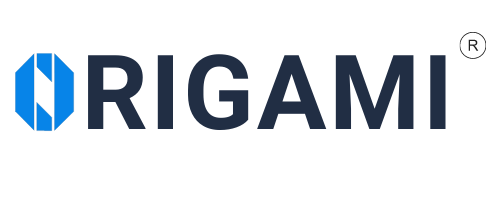
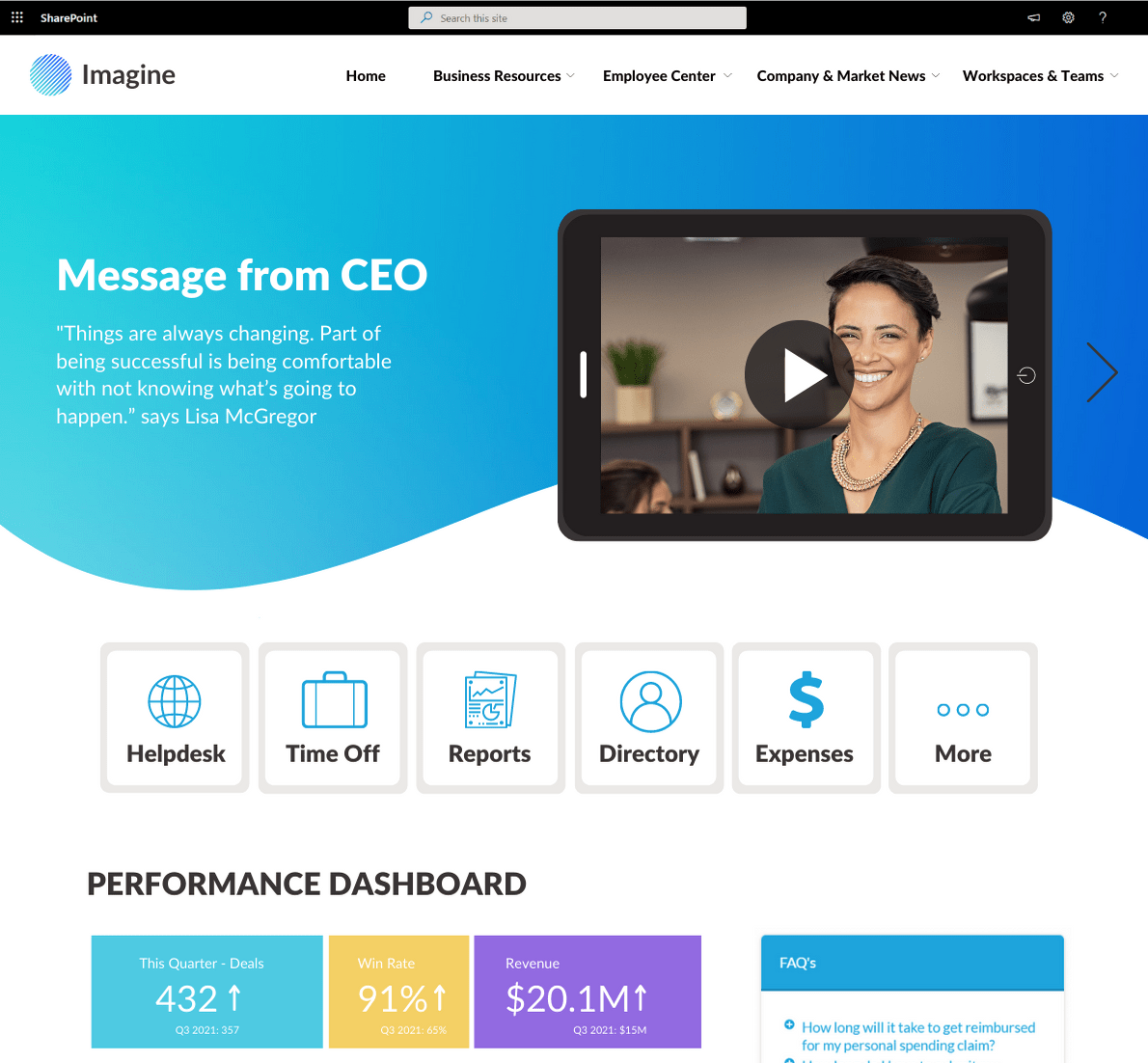



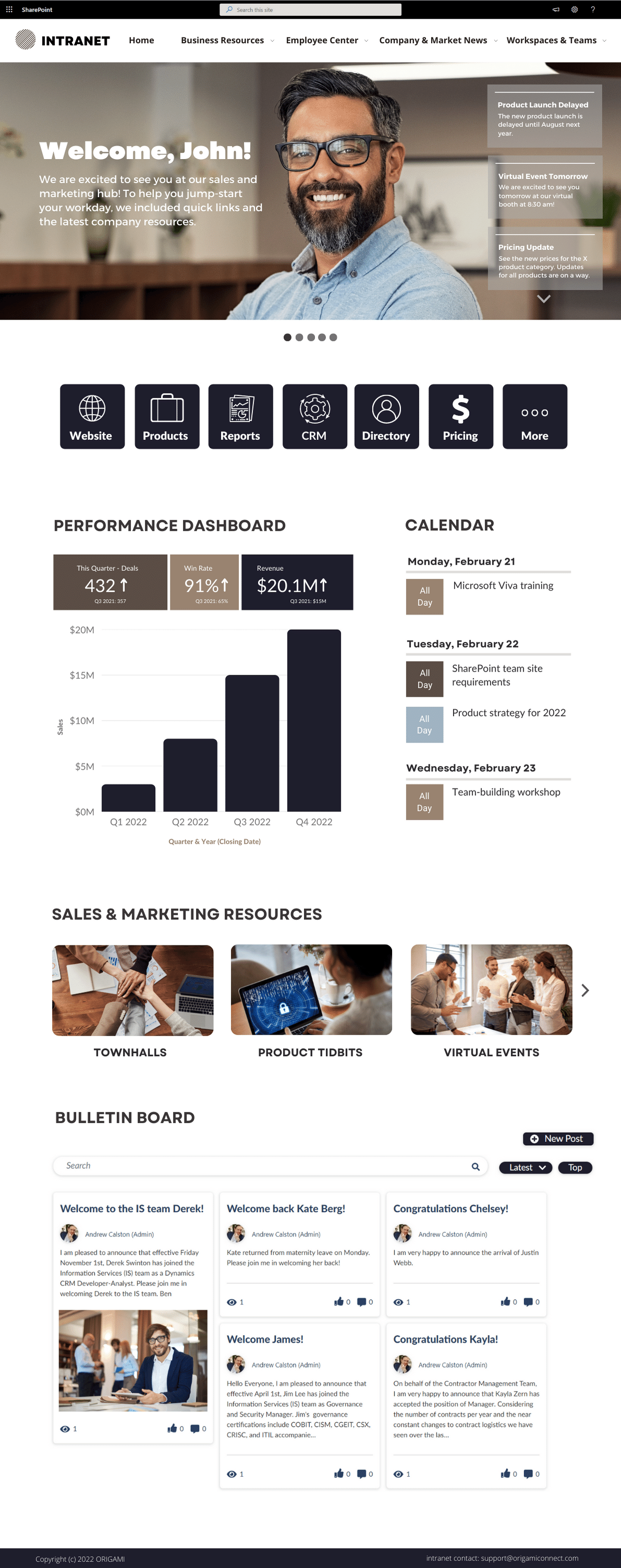
















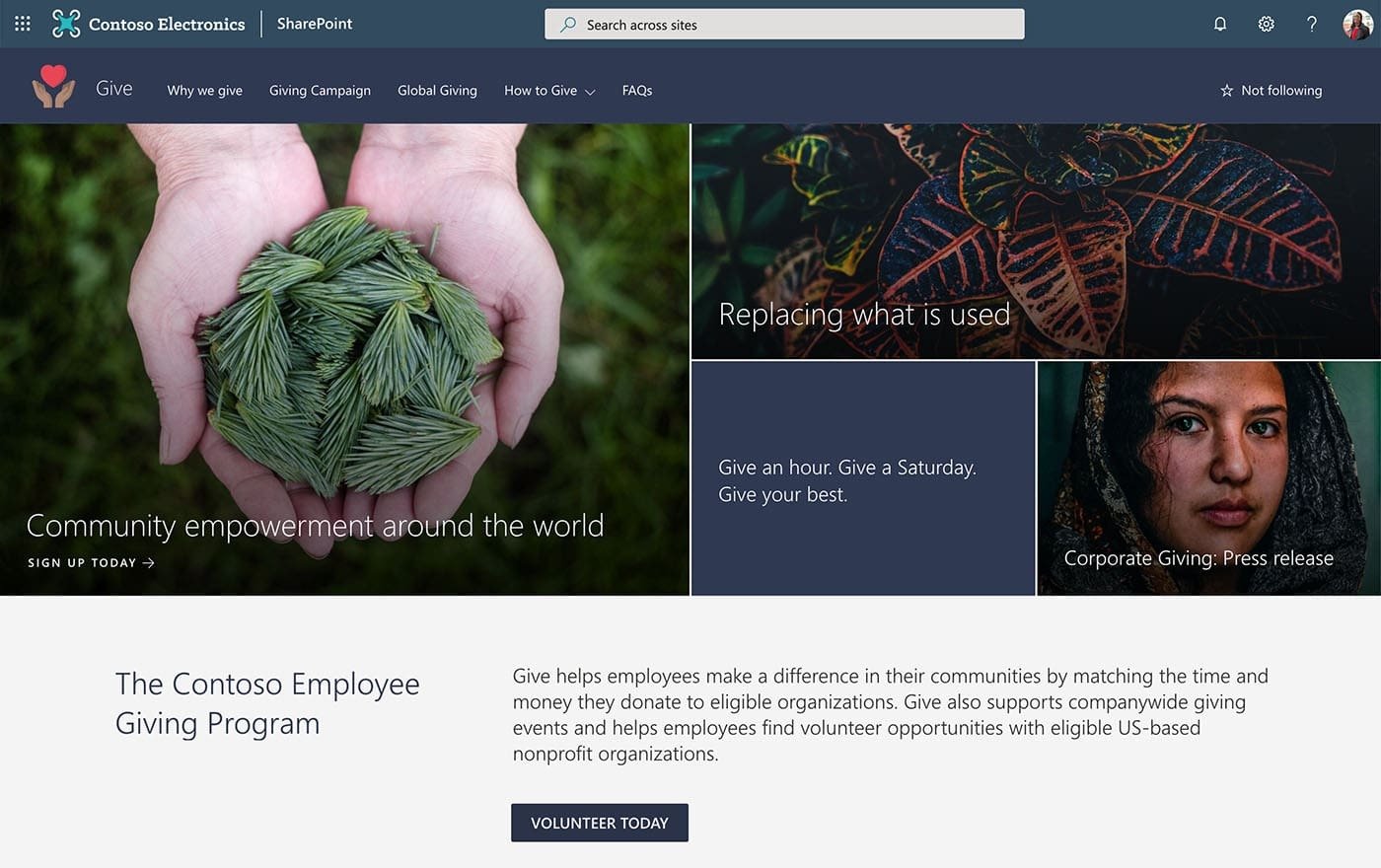
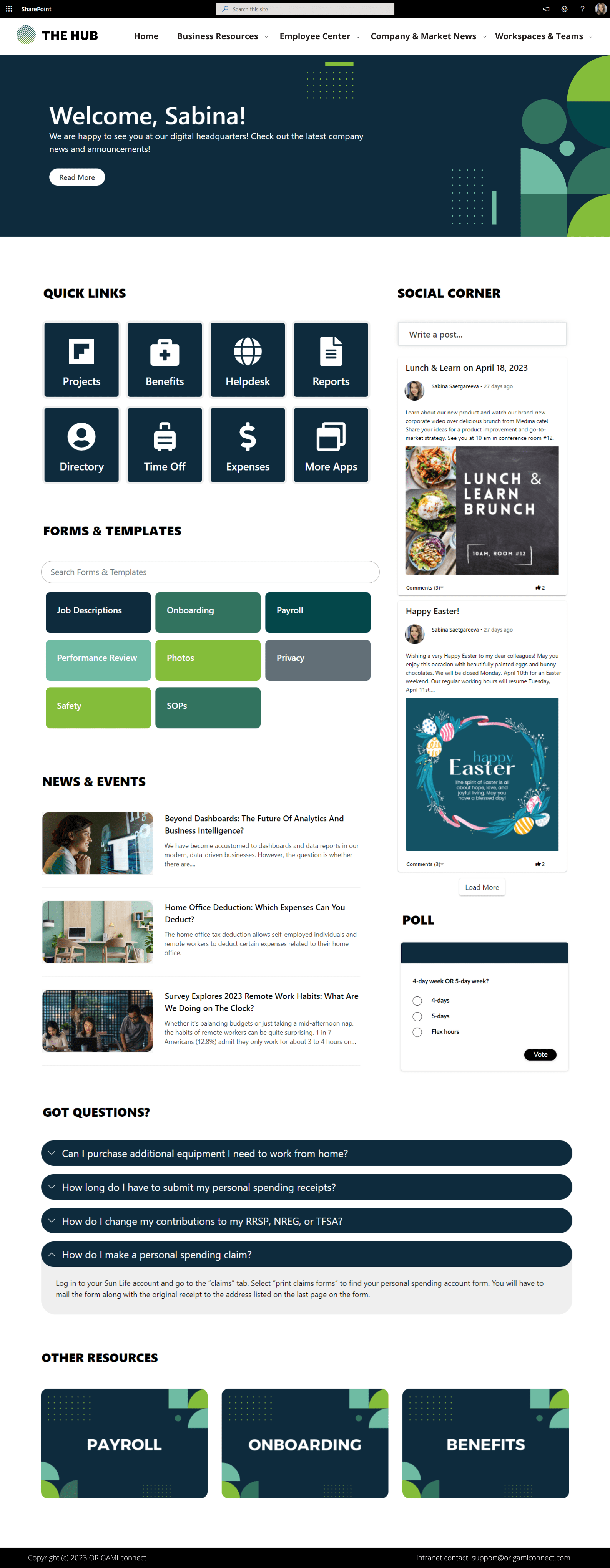







![How to [convince your boss] to send you to SPC18 this year?](https://images.squarespace-cdn.com/content/v1/5c8037c77a1fbd35eda4775c/1554403844547-XP7FDBWNU2Q6YBAFG0V4/photo-1504384764586-bb4cdc1707b0.jpg)

![[How-To]: Auto generate documents from data stored in SharePoint list and send them for signatures with DocuSign](https://images.squarespace-cdn.com/content/v1/5c8037c77a1fbd35eda4775c/1554403591116-R5Y42ZOY8WFRIBIP43J7/photo-1542744095-0d53267d353e.jpg)





















Intranet IA expert tips and step-by-step guide for leading intranet information architecture workshops to shape your intranet. Discover expert intranet ia insights and all you need to know to create a phenomenal intranet ia for your organization.